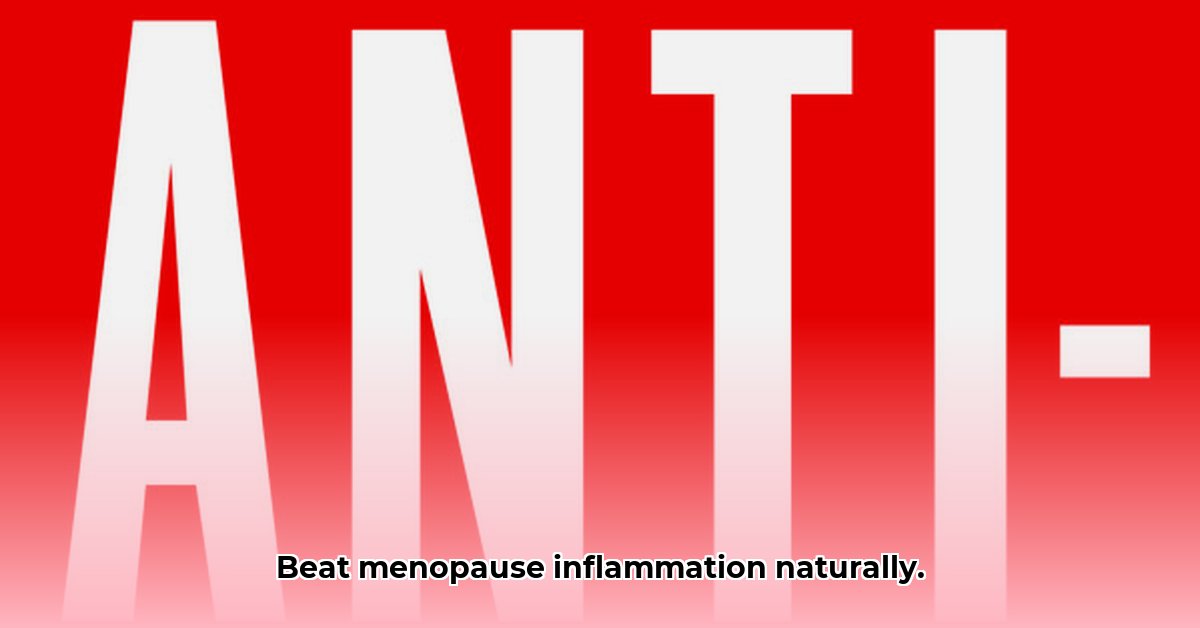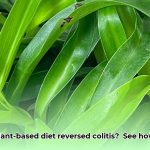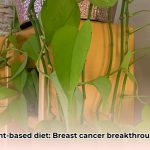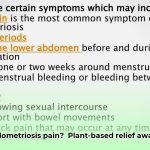Menopause can bring discomfort, including hot flashes, sleepless nights, and mood swings, but diet can make a big difference. For more information on specific foods, check out this helpful guide on anti-inflammatory foods. This instructional guide reveals the connection between inflammation and menopause symptoms and explains how choosing anti-inflammatory foods can help ease your way through this life stage with more comfort and confidence. By focusing on delicious, nutritious meals, you can take control of your health during menopause.
Anti-Inflammatory Foods for Menopause Relief
Menopause, a time of hormonal changes, can bring hot flashes, mood swings, and other challenges. What you eat can significantly impact how you feel. Let’s explore the role of anti-inflammatory foods during this transition, focusing on personalized diet plans tailored to your specific needs.
Understanding the Inflammation Connection: A Body-Wide Response
Inflammation is your body’s natural response to injury or infection, acting like an alarm system. However, chronic inflammation, or long-term low-level inflammation, can contribute to health issues. During menopause, hormonal shifts can increase inflammation, potentially worsening symptoms.
Imagine inflammation as a simmering fire; some menopausal symptoms are like the irritating smoke. Anti-inflammatory foods can help cool things down and lessen the discomfort.
Supercharge Your Diet: Anti-Inflammatory Powerhouses
Your diet is a powerful tool to navigate menopause. By making smart food choices, you can significantly impact how you feel. Consider these inflammation-fighting all-stars:
- Fatty Fish – Your Omega-3 Powerhouse: Salmon, mackerel, herring, and sardines are rich in omega-3 fatty acids, which research suggests can reduce inflammation and even boost your mood. Aim for at least two to three servings a week. Omega-3s help balance hormones and improve joint stiffness, common during menopause.
- Vibrant Vegetables – The Antioxidant Army: Leafy greens like spinach, kale, and Swiss chard, berries (blueberries, strawberries, raspberries), and brightly colored vegetables (bell peppers, carrots, broccoli) are packed with antioxidants, vitamins, and minerals. These fight off free radicals, unstable molecules that can damage cells and contribute to inflammation. Leafy greens also provide magnesium for better sleep and reduced anxiety.
- Fruits – Sweet and Supportive Allies: Beyond berries, fruits like cherries, grapes, and pineapple provide antioxidants and flavonoids with anti-inflammatory properties.
- Whole Grains – The Fiber Friends: Swap refined grains (like white bread and white rice) for whole grains (like brown rice, quinoa, oats, and whole-wheat bread). The fiber in whole grains aids digestion and supports a healthy gut, increasingly recognized as a key player in managing inflammation. They also help regulate blood sugar levels.
- Nuts and Seeds – The Nutrient Nuggets: Almonds, walnuts, flaxseeds, chia seeds, and pumpkin seeds are nutritional powerhouses offering healthy fats, fiber, and antioxidants, all contributing to their anti-inflammatory effects. Walnuts, in particular, provide healthy fats and antioxidants for brain health.
- Legumes – Plant-Based Protein Champions: Lentils, chickpeas, and black beans are excellent sources of plant-based protein and fiber. The fiber content aids digestion and helps regulate blood sugar.
- Turmeric – The Golden Anti-Inflammatory: This golden spice contains curcumin, a compound known for its potent anti-inflammatory properties. Enhance its absorption by pairing it with black pepper. Studies suggest that 500-1000 mg of curcumin daily can reduce inflammatory markers in postmenopausal women.
- Ginger – Spice Rack Savior: Ginger possesses anti-inflammatory properties that can help alleviate joint pain and digestive discomfort.
- Olive Oil (Extra Virgin) – The Healthy Fat Foundation: Use extra virgin olive oil as your primary cooking oil and salad dressing. It contains oleocanthal, a compound with anti-inflammatory properties similar to ibuprofen.
- Fermented Foods – Gut Health Guardians: Yogurt (unsweetened), kefir, sauerkraut, and kimchi support a healthy gut microbiome, which is closely linked to hormone metabolism and immune function. Choose organic, unsweetened varieties.
- Green Tea – Antioxidant-Rich Beverage: Green tea contains epigallocatechin gallate (EGCG), an antioxidant that may reduce inflammation. It’s also a gentler alternative to coffee.
Foods to Reduce or Eliminate: Mindful Choices
While enjoying beneficial foods is important, it’s also wise to consider limiting foods that might fuel inflammation:
- Processed Foods – The Inflammatory Culprits: These often contain unhealthy fats, added sugars, artificial sweeteners, sodium, and preservatives, all of which can increase inflammation.
- Red Meat – Moderation is Key: Some studies suggest consuming large amounts of red meat can be pro-inflammatory for some individuals. Aim for moderation and choose leaner cuts.
- Refined Sugars – The Blood Sugar Rollercoaster: Refined sugars can lead to blood sugar spikes, triggering inflammation. Limit sugary drinks, sweets, and processed snacks.
- Refined Carbohydrates: White bread, pasta, and pastries can spike blood sugar and insulin levels, contributing to inflammation.
- Fried Foods: Regularly eating fried foods has been associated with higher levels of inflammatory markers. Limit your intake and opt for baked, sauteed, or air-fried options.
- Alcohol – Enjoy Responsibly: Excessive alcohol consumption can increase inflammation and potentially worsen some menopausal symptoms. If you drink, do so in moderation.
- Caffeine: While not always inflammatory, excessive caffeine can worsen anxiety and sleep issues common during menopause.
Sample Anti-Inflammatory Meal Plan: A Day of Deliciousness
Here’s a sample meal plan to give you an idea. Adjust it to your preferences and dietary needs:
| Meal | Description |
|---|---|
| Breakfast | Oatmeal with berries (like blueberries) and a sprinkle of walnuts and flaxseeds |
| Lunch | Salmon salad with mixed greens, avocado, and a light lemon-olive oil vinaigrette |
| Dinner | Chicken stir-fry with brown rice and a variety of colorful, fresh veggies (broccoli, bell peppers, carrots) |
| Snacks | A handful of almonds, a small bowl of mixed berries, a small container of plain Greek yogurt |
Cautions and Considerations: The Fine Print
While anti-inflammatory foods can be valuable in managing menopausal symptoms, everyone is different. Some foods might trigger allergies or interact with medications you’re taking. It’s always a good idea to consult with your doctor or a registered dietitian before making major dietary changes, especially if you have underlying health conditions or are taking medications. They can help you create a personalized plan.
When to Seek Professional Guidance: When to Call for Reinforcements
If your menopausal symptoms are severe or significantly impacting your daily life, don’t hesitate to reach out to your healthcare provider. They can perform a thorough assessment and recommend appropriate medical interventions.
Remember, this dietary approach is meant to complement—not replace—medical advice. Focus on anti-inflammatory foods, and you’re taking a proactive step toward feeling your best during menopause. Many women have successfully navigated this journey, and you can too!
How to Personalize Anti-Inflammatory Menopause Diet Plans
Personalizing an anti-inflammatory diet plan is crucial for navigating menopause effectively. Collaboration with healthcare professionals ensures optimal results, making this dietary approach all about understanding your unique needs and preference.
Key Takeaways:
- Menopausal symptoms often stem from increased inflammation, affecting areas like sleep, weight, and mood.
- An anti-inflammatory diet that includes fatty fish, leafy greens, and colorful fruits can significantly ease these symptoms.
- Personalizing your plan involves understanding your body’s needs and preferences.
Understanding the Inflammation-Menopause Link
Menopause brings hormonal shifts that often trigger inflammation, contributing to uncomfortable symptoms like hot flashes, night sweats, fatigue, mood changes, and joint pain. Managing inflammation effectively is a proactive and natural approach to feeling better. Estrogen decline can lead to increased levels of inflammatory markers, highlighting the importance of dietary intervention.
The Power of Anti-Inflammatory Foods: Natural Relief
Many foods possess anti-inflammatory properties, which help soothe your body and reduce menopausal symptoms. But how do you personalize your diet to maximize these benefits?
How to Personalize Your Anti-Inflammatory Menopause Diet Plan: A Step-by-Step Guide
Creating a personalized plan requires careful consideration. Here’s a step-by-step guide to help you tailor your diet:
- Assess Your Current Diet and Health: Keep a detailed food diary for at least a week, preferably two, to understand your starting point. Note portion sizes, meal timings, and any associated symptoms. Identify any food sensitivities or allergies, as these can worsen inflammation. Consider pre-existing conditions, like heart issues, osteoporosis, or diabetes, that might influence your choices and require specific dietary adjustments.
- Identify Your Menopausal Symptoms: Are hot flashes your primary concern, or is it fatigue, mood swings, joint pain, or sleep disturbances? Prioritize foods that target your most bothersome symptoms. Document your symptoms daily, rating their severity on a scale of 1 to 10, to monitor improvements.
-
Incorporate Anti-inflammatory Powerhouses:
- Fruits and Vegetables: Berries, leafy greens, and colorful veggies are rich in antioxidants. Aim for at least five servings a day.
- Fatty Fish: Salmon, tuna, mackerel, and sardines provide omega-3 fatty acids,
- Plant-based Diet Colitis Remission: Success Stories - December 18, 2025
- Plant Based Diet Breast Cancer: Research-Based Benefits - December 16, 2025
- Plant-Based Diet Ulcerative Colitis Remission: Proven Benefits - December 15, 2025










